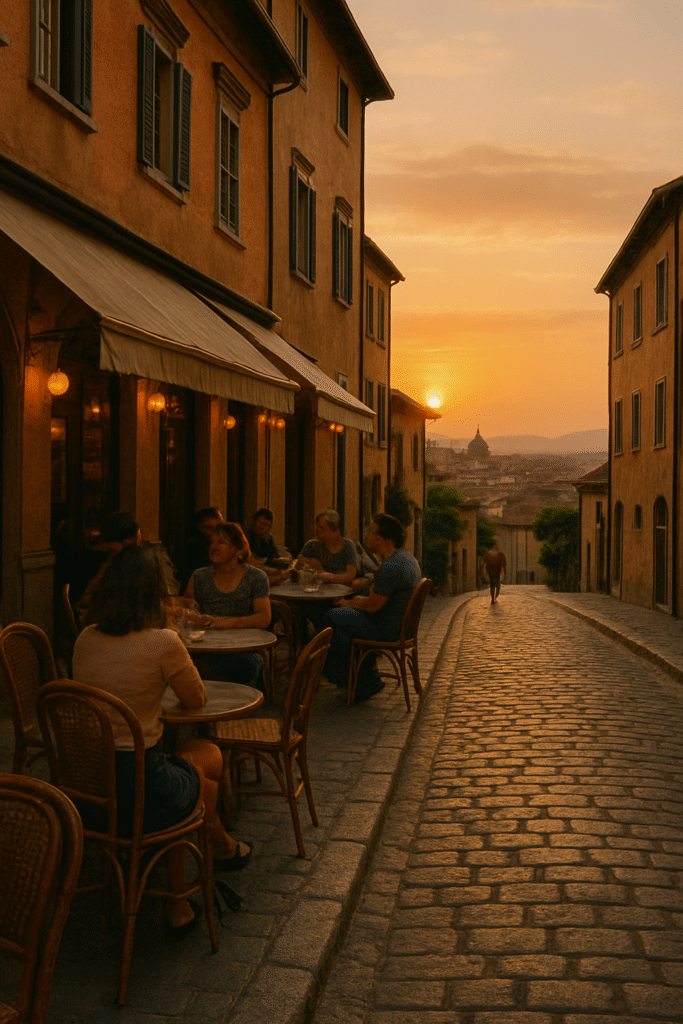
Paris is always a good idea. Rome? Timeless. Amsterdam? A dream. But let’s be honest—Europe’s big hitters are often overbooked, overpriced, and overly crowded.
The good news? Europe is brimming with smaller, quieter cities that offer just as much beauty and soul—minus the selfie sticks and inflated price tags.
Here are some of the best underrated European cities that fly under the radar but overdeliver on charm, history, and that “why didn’t I come here sooner?” vibe.
1. Ljubljana, Slovenia
Vibe: Storybook meets sustainable
Tucked between Italy and Croatia, Slovenia’s capital is one of Europe’s greenest, cleanest, and most quietly beautiful cities. The car-free old town winds along the Ljubljanica River, dotted with cozy cafés, bridges, and Baroque buildings. You’ll find a thriving food scene, affordable boutique hotels, and an artsy energy that feels both modern and medieval.
Don’t miss: Paddleboarding on the river or day-tripping to Lake Bled.
2. Ghent, Belgium
Vibe: Edgy meets enchanting
While Bruges gets most of the love, Ghent is the cooler cousin—with canals, yes, but also student energy, street art, and a surprisingly wild nightlife scene. It’s a medieval city that doesn’t take itself too seriously, and its blend of gothic towers and gritty charm makes it feel alive in a way many postcard towns don’t.
Don’t miss: A boat tour with a beer in hand and the jaw-dropping altarpiece at St. Bavo’s Cathedral.
3. Timișoara, Romania
Vibe: Boho meets baroque
This western Romanian gem is colorful, cultured, and ridiculously affordable. It’s a city of public squares, pastel facades, art museums, and tech start-ups, with a rich Austro-Hungarian past. It was also the spark of Romania’s 1989 revolution, so history runs deep here. Bonus: It was named a European Capital of Culture in 2023.
Don’t miss: A summer festival in Union Square and a stroll through its lush, flower-filled parks.
4. Girona, Spain
Vibe: Catalan cool with medieval flair
Just 40 minutes from Barcelona by train, Girona offers all the Catalan charm without the chaos. Walk the ancient city walls, get lost in its Jewish Quarter, and feast on some of Spain’s best food (El Celler de Can Roca, anyone?). With fewer crowds, you’ll actually hear the bells and birds in this sunlit city.
Don’t miss: Visiting during the Temps de Flors flower festival in spring.
5. Poznań, Poland
Vibe: Colorful, youthful, and full of surprises
Poland’s fifth-largest city is often overlooked—but shouldn’t be. Poznań’s old town is a Technicolor dream, its culinary scene is booming (hello, sourdough pierogi), and its student population keeps the vibe fresh. It’s also a historical hub, from royal castles to renaissance town halls.
Don’t miss: The daily “goat show” at the Town Hall clock tower (yes, it’s a thing—and it’s adorable).
6. Trieste, Italy
Vibe: Coffee-scented elegance on the Adriatic
Nestled between Slovenia and the sea, Trieste doesn’t feel like typical Italy—and that’s what makes it amazing. Influenced by Austro-Hungarian, Slavic, and Mediterranean cultures, it’s a literary, coastal city with grand cafes, faded grandeur, and sunset views that rival the Amalfi Coast.
Don’t miss: An espresso at Caffè San Marco and a sunset walk along the waterfront.
7. Braga, Portugal
Vibe: Spiritual soul with modern flair
Often skipped for Porto or Lisbon, Braga is one of Portugal’s oldest cities—and one of its liveliest. It’s deeply religious (with ornate churches galore) but also youthful, stylish, and surprisingly tech-forward. Bonus: it’s more affordable and way less crowded than its bigger neighbors.
Don’t miss: The Bom Jesus do Monte staircase and the buzzing café scene.
Why Underrated Cities Are the New Bucket List
In these cities, you won’t just find great food and historic streets—you’ll find space. Space to breathe. To connect. To be surprised. These places offer the kind of travel that feels personal, not performative.
So if you’re ready to fall in love with places that haven’t been hashtagged to death, go where the guidebooks haven’t told you to (yet). You’ll come home with stories no one else at the dinner table has.
Author: AI Generated